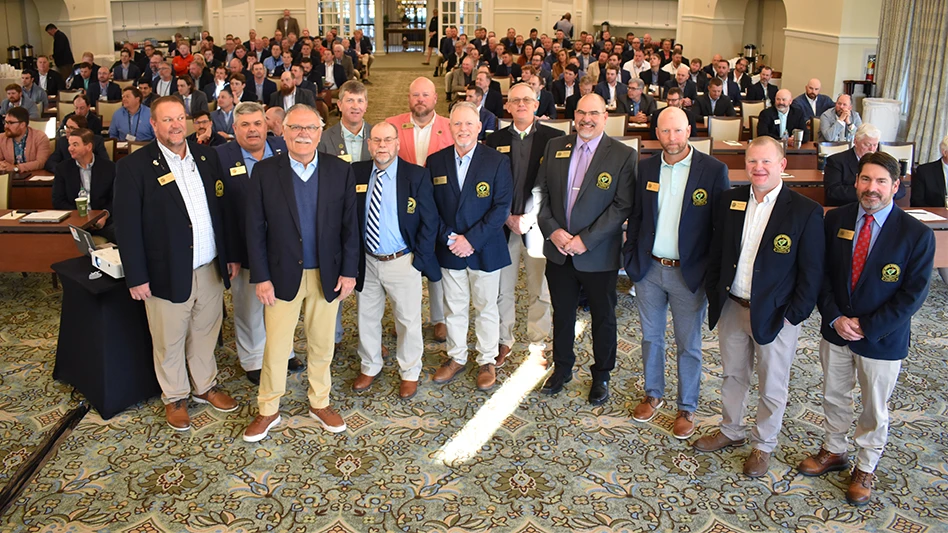If you’re an NBA fan, it’s pretty hard to hear the word “practice” and not think about Allen Iverson’s famed rant in 2002 where he dismissed the idea that he’d let down his team by not showing up for workouts: “I mean, listen, we’re talking about practice, not a game, not a game, not a game, we talking about practice.”
Iverson said the word “practice” more than 20 times in a short press conference. It was both hilarious and disturbing. He later admitted he was hammered at the time which makes it sadder and funnier all at once.
When superintendents hear the word “practice,” they often flinch involuntarily because the range is a giant pain in the butt to maintain. There is no “fixing” turf on a driving range … it’s just a constant battle to minimize the worst of the damage. And it costs a lot of money. Most supers we spoke with for our cover story were investing 12–25 hours of labor per week in practice areas. Higher-end courses were double or triple that figure.
Yet it’s a very, very important investment.
Let’s take a step back and consider where golf is in 2016. There are 15,200 facilities in the U.S. To put that in context, there are a thousand more courses than McDonald’s franchises in this country. Makes you shudder a little, doesn’t it?
Yes, we’re closing a golf course every 48 hours in the U.S. Our bloated supply shrinks by about 150 facilities a year … or a whopping 1 percent of our inventory. The fact is even the worst operations rarely shut down. There’s always somebody willing try to “save” courses that should be allowed to die because of lousy location, a bad business model, poor management or intense local competition.
(OK, I know every course that closes is theoretically a superintendent job loss and that stinks. But most of them are pretty crappy jobs, to be honest. Many of these workplaces are toxic and stressful. Any super who’s managed a course in bankruptcy or receivership will back me up on this.)
In a decade, we’ll be at 13,000 facilities which – assuming play doesn’t go backwards and we backfill our aging customer base with women and younger folks – will get supply and demand somewhat equal. Hopefully. Maybe. Who knows?
So-called “grow the game” initiatives are wonderful. First Tee, Get Golf Ready, Golf 2.0, the Olympics – all of that is awesome. Every one of them is worth doing to promote the game generally. The NGF recently told us there is a receptive audience out there with millions of Americans saying they’d like to try golf but feel that it’s not accessible to them or are too intimidated to try.
(By the way, a potential game-grower may be increasing concerns about kids getting concussions from traditional youth sports like football. I believe parents will look at golf as a kinder, gentler sport that won’t scramble Junior’s brains.)
But, smart facilities aren’t just sitting around waiting for the game to grow and a rising tide that will lift all boats. Instead, they’re acting strategically to grow their own business. And, in a crowded market where good customers can be choosy, the wisest clubs are investing in things to differentiate themselves from the pack.
And that brings us back to practice facilities. There are many clubs and good daily fees that offer a great experience on the course. It’s the amenities that often differentiate them from two dozen other good golf courses within a 30-minute drive. Every golfer survey I’ve seen in recent years suggests practice facilities are high on that list of important amenities. And, as time compression grows in American life and carving out 5-plus hours to play 18 holes becomes harder for even the most dedicated golfer, the practice area rightfully becomes a focal point for choosing where they want to spend their time and money.
Upgrading practice areas has become an important trend in golf course operations everywhere. Many of my ASGCA and GCBAA friends are very busy creating enhanced practice environments that do more than just offer a place to hit a few balls before play. Ask yourself, how can you turn a range into a welcoming environment? Is it neat and attractive (despite 10 million divots)? How can you make it someplace people want to be even if they’re not playing? Can the landscaping (fire pits, patios, viewing areas, etc.) create an “outdoor living” experience that transcends golf?
Read our cover story but do your own research. Set up some opportunities to go visit other clubs with great practice areas. Take your green chairman or owner along for the tours. Talk to architects and builders about what they’re doing elsewhere. If the opportunity is right, put your case together, build a responsible plan and budget, and be the catalyst to help cement the future of your facility.
Get curated news on YOUR industry.
Enter your email to receive our newsletters.
Explore the April 2016 Issue
Check out more from this issue and find your next story to read.
Latest from Golf Course Industry
- Atlanta Athletic Club approves funding for master plan
- PBI-Gordon introduces new field development team
- The Cabot Collection announces move into course management
- Carolinas GCSA raises nearly $300,000 for research
- Advanced Turf Solutions’ Scott Lund expands role
- South Carolina’s Tidewater Golf Club completes renovation project
- SePRO to host webinar on plant growth regulators
- Turfco introduces riding applicator





